IL-4 Protects the Mitochondria Against TNFα and IFNγ Induced Insult During Clearance of Infection with Citrobacter rodentium and Escherichia coli
- PMID: 26481427
- PMCID: PMC4613366
- DOI: 10.1038/srep15434
IL-4 Protects the Mitochondria Against TNFα and IFNγ Induced Insult During Clearance of Infection with Citrobacter rodentium and Escherichia coli
Abstract
Citrobacter rodentium is a murine pathogen that serves as a model for enteropathogenic Escherichia coli. C. rodentium infection reduced the quantity and activity of mitochondrial respiratory complexes I and IV, as well as phosphorylation capacity, mitochondrial transmembrane potential and ATP generation at day 10, 14 and 19 post infection. Cytokine mRNA quantification showed increased levels of IFNγ, TNFα, IL-4, IL-6, and IL-12 during infection. The effects of adding these cytokines, C. rodentium and E. coli were hence elucidated using an in vitro colonic mucosa. Both infection and TNFα, individually and combined with IFNγ, decreased complex I and IV enzyme levels and mitochondrial function. However, IL-4 reversed these effects, and IL-6 protected against loss of complex IV. Both in vivo and in vitro, the dysfunction appeared caused by nitric oxide-generation, and was alleviated by an antioxidant targeting mitochondria. IFNγ -/- mice, containing a similar pathogen burden but higher IL-4 and IL-6, displayed no loss of any of the four complexes. Thus, the cytokine environment appears to be a more important determinant of mitochondrial function than direct actions of the pathogen. As IFNγ and TNFα levels increase during clearance of infection, the concomitant increase in IL-4 and IL-6 protects mitochondrial function.
Figures

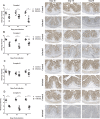
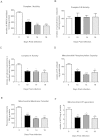
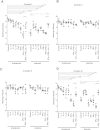
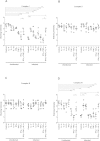
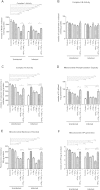

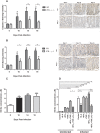

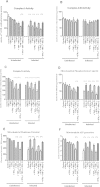
Similar articles
-
Colonic levels of vasoactive intestinal peptide decrease during infection and exogenous VIP protects epithelial mitochondria against the negative effects of IFNγ and TNFα induced during Citrobacter rodentium infection.PLoS One. 2018 Sep 25;13(9):e0204567. doi: 10.1371/journal.pone.0204567. eCollection 2018. PLoS One. 2018. PMID: 30252907 Free PMC article.
-
The Probiotic Lactobacillus Prevents Citrobacter rodentium-Induced Murine Colitis in a TLR2-Dependent Manner.J Microbiol Biotechnol. 2016 Jul 28;26(7):1333-40. doi: 10.4014/jmb.1602.02004. J Microbiol Biotechnol. 2016. PMID: 27056471
-
Interleukin 4 induces rapid mucin transport, increases mucus thickness and quality and decreases colitis and Citrobacter rodentium in contact with epithelial cells.Virulence. 2019 Dec;10(1):97-117. doi: 10.1080/21505594.2019.1573050. Virulence. 2019. PMID: 30665337 Free PMC article.
-
Concurrent infection with an intestinal helminth parasite impairs host resistance to enteric Citrobacter rodentium and enhances Citrobacter-induced colitis in mice.Infect Immun. 2005 Sep;73(9):5468-81. doi: 10.1128/IAI.73.9.5468-5481.2005. Infect Immun. 2005. PMID: 16113263 Free PMC article.
-
Dietary vitamin D3 deficiency alters intestinal mucosal defense and increases susceptibility to Citrobacter rodentium-induced colitis.Am J Physiol Gastrointest Liver Physiol. 2015 Nov 1;309(9):G730-42. doi: 10.1152/ajpgi.00006.2015. Epub 2015 Sep 3. Am J Physiol Gastrointest Liver Physiol. 2015. PMID: 26336925 Free PMC article.
Cited by
-
IFNγ causes mitochondrial dysfunction and oxidative stress in myositis.Nat Commun. 2024 Jun 26;15(1):5403. doi: 10.1038/s41467-024-49460-1. Nat Commun. 2024. PMID: 38926363 Free PMC article.
-
Formyl peptide receptor 2 orchestrates mucosal protection against Citrobacter rodentium infection.Virulence. 2019 Dec;10(1):610-624. doi: 10.1080/21505594.2019.1635417. Virulence. 2019. PMID: 31234710 Free PMC article.
-
MiR-302a Regenerates Human Corneal Endothelial Cells against IFN-γ-Induced Cell Death.Cells. 2022 Dec 22;12(1):36. doi: 10.3390/cells12010036. Cells. 2022. PMID: 36611829 Free PMC article.
-
Impairment of Multiple Mitochondrial Energy Metabolism Pathways in the Heart of Chagas Disease Cardiomyopathy Patients.Front Immunol. 2021 Nov 12;12:755782. doi: 10.3389/fimmu.2021.755782. eCollection 2021. Front Immunol. 2021. PMID: 34867990 Free PMC article.
-
FAM3A Ameliorates Brain Impairment Induced by Hypoxia-Ischemia in Neonatal Rat.Cell Mol Neurobiol. 2023 Jan;43(1):251-264. doi: 10.1007/s10571-021-01172-6. Epub 2021 Dec 1. Cell Mol Neurobiol. 2023. PMID: 34853925 Free PMC article.
References
-
- Luperchio S. A. & Schauer D. B. Molecular pathogenesis of Citrobacter rodentium and transmissible murine colonic hyperplasia. Microbes Infect. 3, 333–340 (2001). - PubMed
Publication types
MeSH terms
Substances
LinkOut - more resources
Full Text Sources
Other Literature Sources
Research Materials

